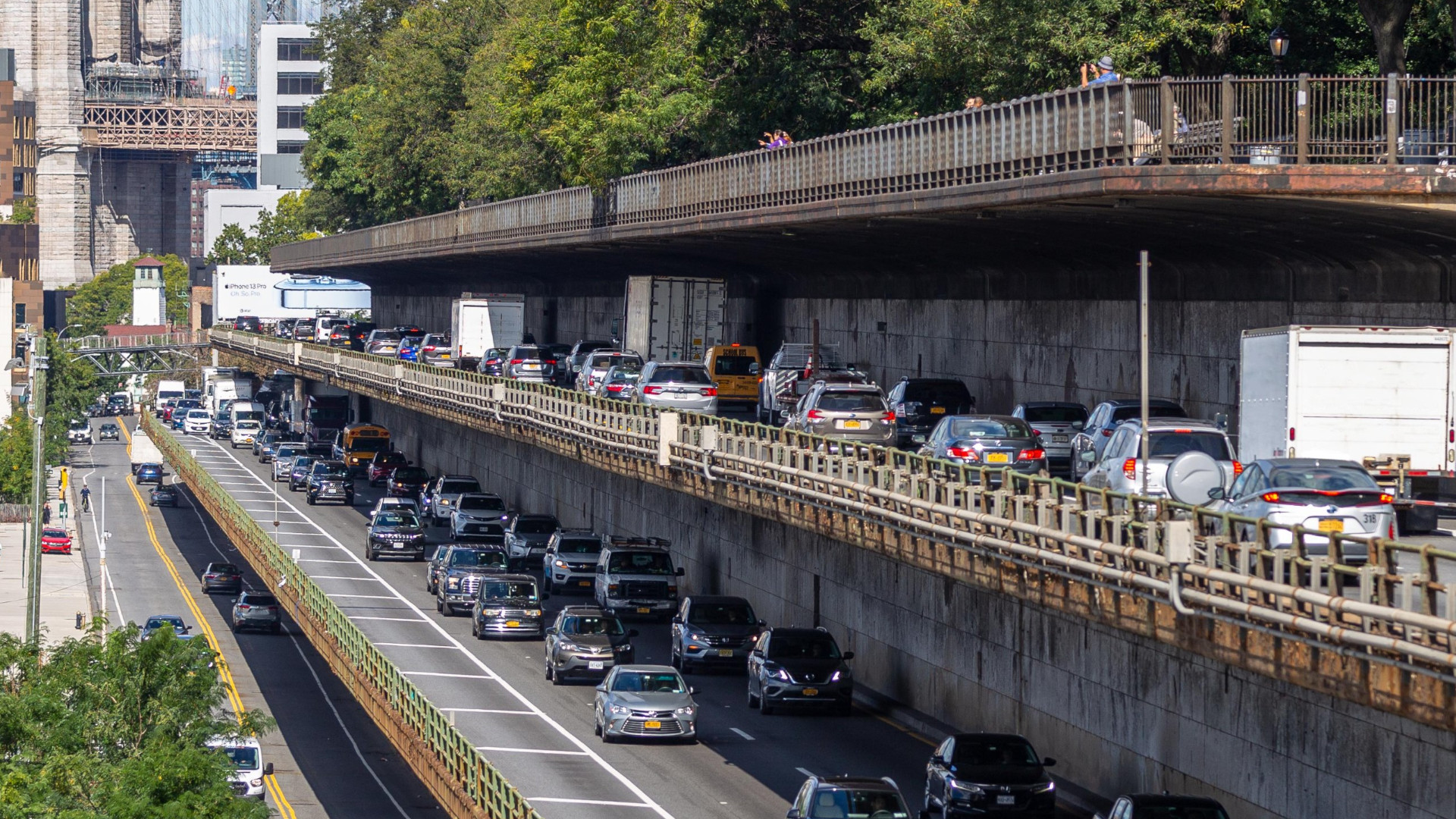

New York City has plenty of infrastructure challenges to deal with. In an effort to better protect and maintain its various highways and expressways, it will now implement new sensors to automatically monitor and fine overweight trucks on its roads.
As announced by the city’s Department of Transport on Twitter, the new automated enforcement program will target overweight trucks traveling on the aging Brooklyn-Queens Expressway (BQE). In-road sensors will monitor the weight of passing vehicles, in what is being called the BQE Weigh-In-Motion program.
It’s a nifty way to monitor vehicle weights without the onerous space requirements and stoppages required with a traditional manual weighbridge setup. Instead, vehicles will be measured during their regular travel, with automated license-plate cameras used to enforce fines for vehicles in breach of the city’s vehicle weight limits. The enforcement regime will only target the City-owned section of the BQE, covering the roadway from the area of Atlantic Avenue to Sands Street in Brooklyn.
A 90-day warning period will kick off on August 10. At the end of this period, fines of $650 will be issued for overweight trucks traveling in the Queens direction on a per-violation basis. Vehicles will be monitored for compliance with both gross vehicle weight and axle weights. Measured weights will be indicated on violation notices. Installation of equipment to monitor drivers traveling towards Staten Island is slated for later this year, with a similar warning period to follow before full enforcement is implemented.
The weight limits for trucks in the city top out at a load of 22,400 pounds for any single axle. Any two axles may not exceed a load of 36,000 pounds, while trucks with three or more axles may not exceed a total load of 80,000 pounds. Further details affect these figures, involving weight distribution dependent on axle distances, tire widths, and other factors.
Problems with the BQE have been on authorities’ radar for a long time. As covered by the New York Times, the most concerning stretch is a triple-decker cantilever section running 1.5 miles long below the Brooklyn Heights Promenade. The expressway is suffering from years of corrosion and wear and tear from heavy trucking in excess of what it was designed for. The crucial piece of New York’s transport infrastructure has had a hard life since its opening back in 1954.
The long-term vision for the BQE includes serious upgrades to keep the transport corridor healthy and safe for generations to come. Mayor Eric Adams has been open about his goals to access federal funding to pay for the engineering and construction required to fix the BQE for the future. The automated enforcement of weight limits should help to take the pressure off in the meantime.
Got a tip? Let the author know: lewin@thedrive.com